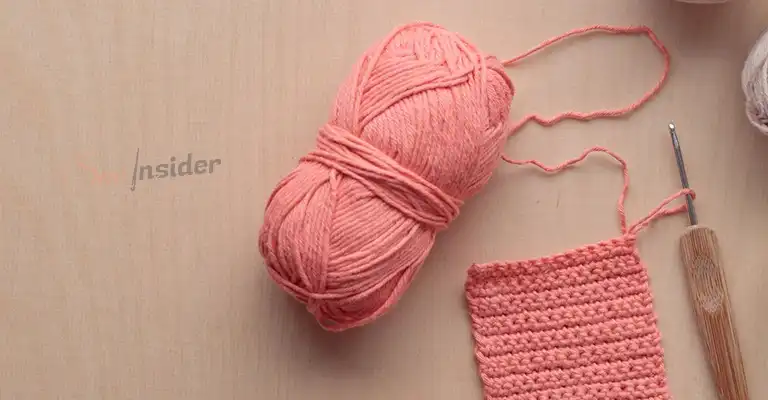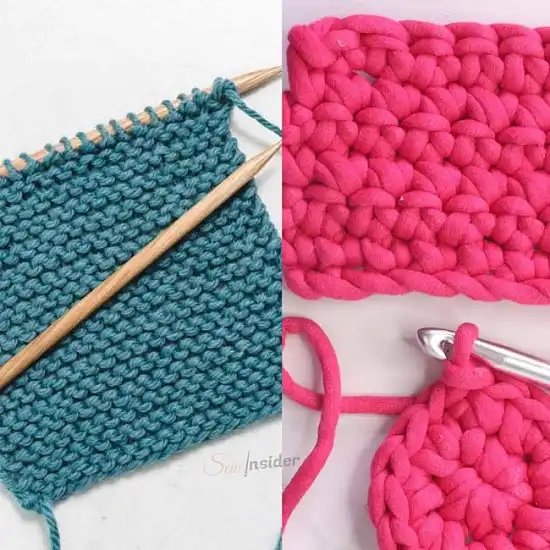You have a beautiful piece of knitting in your hand and you want to convert the piece into crochet. But is it even possible? Can you convert knitting patterns to crochet? Luckily, It seems like you do not have to wait longer, as we are here to share the process in detail.
Take your pattern and read it profoundly and then you start converting the knitting stitches to crocheting stitches. We’ll discuss the things you’ll be needing the process and we’ll share all the required steps for you here.
So, let’s get into the detailed steps without further ado.

A Brief Understanding About Knitting and Crocheting
It’s always exciting to learn something new, especially when it comes to crafting. Knitting or Crocheting both are fine crafting. Before we jump into the long steps, here are some surface-level talks regarding the differences between knitting and crocheting.
Knitting involves creating stitches by looping the yarn around the needles in a specific way. In knitting, there are two primary stitches are practiced, the plain and the purl. When you combine these stitches, you can produce stretchy and ribbed fabrics in your knitted items.
On the other hand, Crocheting, which originates from the French word for ‘little hook,’ uses a unique tool. To crochet, all you need is a single hook with a handle at one end and a hook at the other. Unlike knitting, there’s no need to transfer stitches between needles, crocheting makes the procedure simpler.
Step-By-Step Process to Convert Knitting Pattern to Crochet
For an excellent outcome from your hard work, make a sample before starting the main project. It’s a good practice to create a sample using the measurements you’ve figured out for the length and width.
This will ensure that the crocheted piece follows the knitting pattern. If your sample doesn’t quite match your vision, don’t worry. You can make adjustments to your diagram or stitches until it looks just right. Once your sample meets your expectations, you’re ready to start the final project.
Now let us help you to convert a Knitting Pattern to a Crochet step by step. We’ll guide you through the right way to do the task.
Materials Needed
- Knitting needles in size 7 (4.5mm)
- Worsted-weight cotton yarn
- A Scissors
- Yarn needle for weaving in ends
Let’s begin the process now
First Step: Understand The Knitting Pattern
The very first step will be reading the pattern and understanding it thoroughly. Because not every knitting pattern is possible to convert to crochet. complex or lengthy ones may create challenges. So a better understanding of the steps and the symbols while reading the full pattern will ensure successful conversion and a clear project vision.
Second Step: Choose The Stitches
Choose the stitches you want to recreate. Here are the 3 most used stitches.
1. Slip Stitch
This stitching works like its name because of the technique of slipping each stitch into the front loop of the preceding row’s stitch This stitch crochet creates a delicate, semi-flexible texture, a great deal for elegant items.
2. Back loop only stitch
It also works like its name, to create the stitch you need to crochet into only the back loop of a stitch, rather than both loops. After finishing the stitches it will have a ribbed look and can be stretchy, depending on the yarn you use.
3. Waistcoat Stitch
Considered one of the best crochet stitches, the waistcoat stitch creates a tight, even texture similar to a knitted stockinette.
Start with a chain of any length for Row 1, followed by Row 2 of a single crochet. The waistcoat stitch is generally used for projects worked “in the round” and with thicker yarns. Note that it produces a very sturdy and thick fabric, so it may not be suitable for soft and delicate garments.
Third Step: Determine The Number of Stitches Required
Next, Make a gauge swatch to determine how many stitches are required for your crochet pattern. This swatch helps you understand how your crocheted fabric will turn out and allows you to adjust your hook size and stretch if necessary.
Make sure you select a yarn that matches your crochet project. Most knitting patterns suggest a standard gauge swatch size, typically five inches by five inches.
Crochet a row of stitches to match the required length in the knitting pattern, using the crochet stitch chosen in Step 2. When finished, check your swatch to make sure it matches the result you want.
If you need to make any adjustments consider using a larger or smaller hook or a different kind of yarn to achieve the desired project.
Step four: Calculation Time!
Draw a sketch or basic diagram of the finished project and take note of these dimensions on your sketch. Then, calculate the number of stitches needed for both the length and width.
Again, Calculate how many stitches are required in each row by multiplying the stitches per inch by the desired width using your gauge swatch. Apply the same calculation for the length to create the required number of rows.
When noting down these calculations, remember that small differences in stitch size could cause slight variations in your final project’s size. These calculations will serve you as a helpful visual guide for your project planning. But do not stress over these slight stitch variances.
Pro tip: Keep detailed notes of your measurements, initial chain length, row stitches, and row estimates to get a successful knitting-to-crochet conversion.
For an excellent outcome from your hard work, make a sample before starting the main project. It’s a good practice to create a sample using the measurements you’ve figured out for the length and width.
This will ensure that the crocheted piece follows the knitting pattern. If your sample doesn’t quite match your vision, don’t worry. You can make adjustments to your diagram or stitches until it looks just right. Once your sample meets your expectations, you’re ready to start the final project.

Additional Tips for Converting Knitting Patterns to Crochet
Here are some valuable tips to keep in mind for getting the best result.
- When choosing a knitting pattern to convert to crochet, go for ones that use flat shapes like scarves, leg warmers, or blankets. These patterns work well for crochet because they are mostly made up of flat pieces.
- Patterns for items like socks, gloves, sweaters, and fitted cardigans use complex stitch increases and decreases in every row to get the right fit. It’s better to stick with knitting for these patterns rather than trying to convert them to crochet.
Conclusion
Thank you for reading our article. We are hoping that now you can Convert the Knitting Pattern to Crochet without having any difficulties. Simply follow the instructions carefully and remain patient throughout the process. Don’t become stressed if it takes a few attempts. Remember to select the right pattern for a successful outcome. Happy crafting!
People Also Asked For
Are crocheting and knitting patterns the same?
No, knitting and crocheting patterns are not the same. There’s a creation of a “V” shape in the knitting process.
The stitches used in crochet are kind of knots. In knitting, the loops frequently shift from one needle to another while holding the stitches in place. And, Crochet uses a single hook to hook the loops together without the need for the complexion like knitting; the hook does it directly on the piece.
Which is quicker: crocheting or knitting?
Crocheting is typically faster than knitting. Crochet stitches are taller, and that allows you to progress quickly. But remember, with practice, you’ll become even faster in both crafts.
Crocheting or knitting; which is harder?
Knitting is a bit more challenging for many people. Once you’ve got the basics, crocheting often feels easier than knitting because you don’t have to constantly transfer stitches between needles.
Leave a Reply